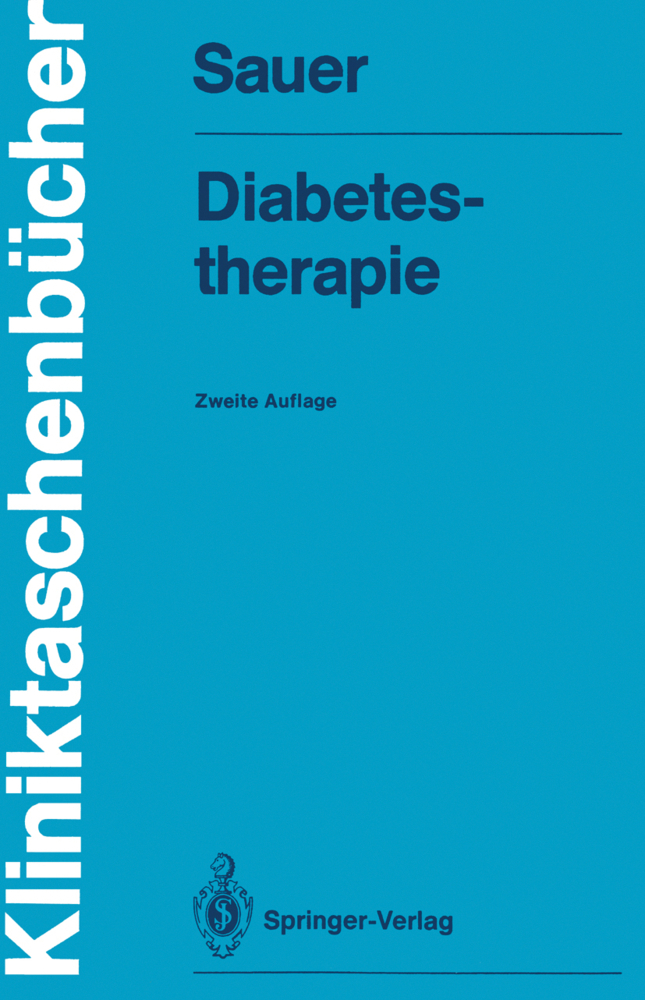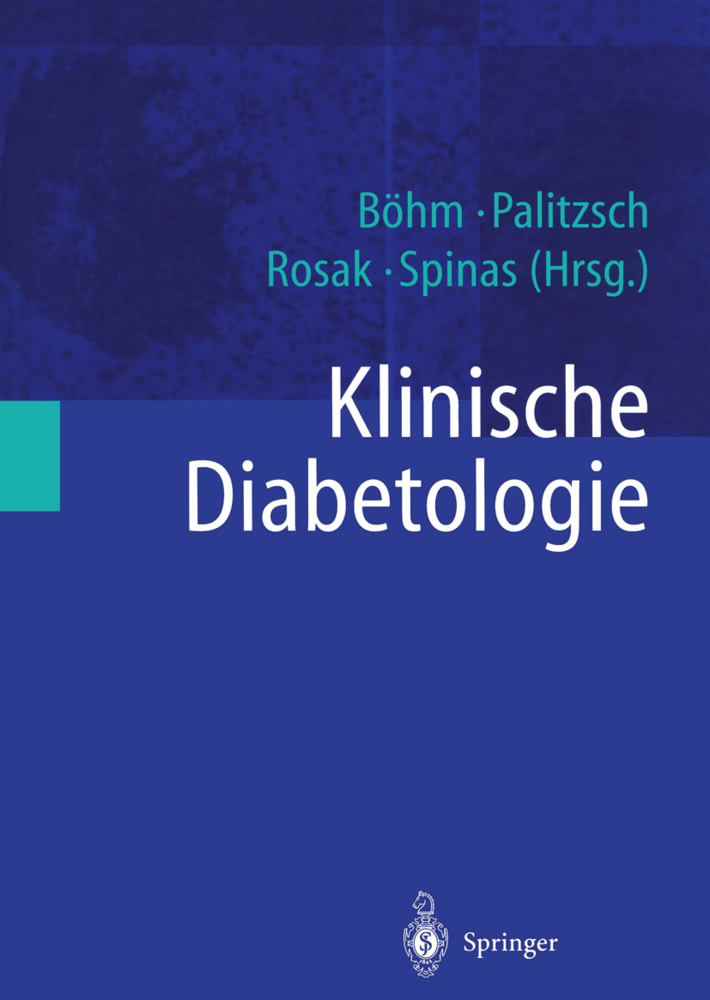Functional Insulin Treatment
Principles, Teaching Approach and Practice. With Forewords by M. Berger and J. S. Skyler
Functional Insulin Treatment
Principles, Teaching Approach and Practice. With Forewords by M. Berger and J. S. Skyler
Functional Insulin Treatment (FIT) is the most effective method of treatment for type 1(insulin-dependent) diabetes available today. Whether with an insulin pump or with multiple daily injections, the diabetic patient trained in FIT is able to dose his insulin on the basis of actual fuction so that he achieves near-normoglycemia and the freedom to eat when, what and how much he wants. The goal of FIT is to adapt the therapy to the lifestyle of the patient. This book creates a common basis for communication among therapists (physicians, nurses, dietitians, diabetes educators) and patients involved in FIT. It clearly defines the principles of the treatment and describes the contents, media and techniques of a practical program for training patients to carry it out. The functional use of insulin is the most effective method of treatment of diabetes requiring insulin available today. This book of Functional Insulin Treatment, FIT, shows how to put it into practice. Previous diabetes education programs have adapted the patient's life style to the conditions of therapy. The goal of FIT is to avoid/delay late complications while tailoring the therapy to the life of the patient: whether with multiple daily injections or with controllable infusion, the diabetic person trained in FIT is able to dose her/his insulin according to its actual function, i.e., either for eating or for fasting or for correction of hyperglycemia, so that she/he achieves both, the target glycemic control and the freedom to fast or to eat whenever, whatever and how much she/he wants. Included are new strategies for patient motivation, new insulin analogs, management of nutrition in overweight, easy estimations of algorithms for starting functional use of insulin and everything that makes flexible treatment an indispensable solution for every interested self-responsible person who needs insulin.
2.1 Intermezzo 1: A Strategy for Failure - or How Not to Educate Patients
3 Basic Diabetes Education (Phase I of Rehabilitation)
3.1 Insulin Action in Healthy Persons; Insulin Deficiency
3.2 Diet
3.3 Self-monitoring
3.4 Strategies for Insulin Treatment
3.5 Insulin
4 FIT Training (Phase II of Rehabilitation)
4.1 Initial Algorithms, "K" and the Blood Glucose Target Value
4.2 Intermezzo 2: A Strategy for Failure - or How to Demotivate Even the Most Convinced Enthusiast
4.3 Introducing FIT in Practice
4.4 Pedagogical Aspects of Insulin Substitution: Transactional Analysis and "Insulin Games"
4.5 Is "Yielding to Temptation" All Bad?
4.6 Testing Algorithms for Correcting Blood Glucose (and Determining the Kidney Threshold for Glucose). Why?
4.7 Why fast?
5 Criteria for Functional Insulin Treatment
5.1 Basal Substitution
5.2 Prandial Insulin Substitution - Problems in Dosing Regular Insulin
5.3 Self-monitoring and Glycemic Control - Why Keep Records?
6 Hypoglycemia
6.1 Definition of Hypoglycemia
6.2 Increased Probability of Severe Hypoglycemia
6.3 Causes of Hypoglycemia
6.4 Prevention of Hypoglycemia
6.5 Treatment of Hypoglycemia
7 Hyperglycemia
8 Rules for Algorithm Modification
8.1 Global Changes in Insulin Requirement
8.2 Modification of Individual Algorithms
9 Physical Activity
9.1 Short, Sporadic Periods of Physical Activity
9.2 Prolonged Periods of Physical Activity
10 Pregnancy in Type I (Insulin-Dependent) Diabetes
10.1 Patient Education Concerning Diabetes and Pregnancy
10.2 Consequences for Treatment
10.3 Interdisciplinary Care for Pregnant Diabetic Women
10.4Special Aspects of Secondary Adjustment of Insulin Dosage During Pregnancy and Childbirth
11 Functional Insulin Treatment for Type II Diabetes
11.1 Characteristics of Treatment of Type II Diabetes
11.2 Covering Basal Insulin Requirements in Insulin-Treated Type II Diabetic Patients
11.3 Special Aspects of the FIT Training Program for Type II Diabetic Patients
11.4 How Can Weight Loss Be Reached with Type II Diabetes During Functional Insulin Treatment
12 Coping with Special Situations
13 Frequent Patient-Related Problems
13.1 Grief-Work in Persons with Diabetes
13.2 Inadequate Information
13.3 Failure to Adjust to the Realities of Diabetes
14 Frequent Physician-Related Problems
14.1 Communication Problems
14.2 Inability to Understand What Life Is Like for the Patient
14.3 Inadequate Information
15 The "Contras"
15.1 Contraindications for Functional Insulin Treatment
15.2 "Difficult" Patients
15.3 Intermezzo 3: A Strategy for Failure or How to Mess Things Up in the Outpatient Phase
16 Checklist for Continuing Care of FIT Patients (Phase III of Rehabilitation)
16.1 The Patient's Knowledge
16.2 Applying Knowledge; Practicability of Therapeutic Measures
16.3 Motivation
16.4 Acceptance of Diabetes
16.5 Metabolic Status
16.6 Late Complications
16.7 Comorbidity
16.8 Social Environment
16.9 The Patient's Contact with the Diabetes Treatment Center, Physician or Diabetes Counselor
16.10 Humor
17 Review of Results and Experience
17.1 Patients
17.2 Follow-up
17.3 Results
17.4 Experience with FIT in Special Situations
18 Open Questions, Unsolved Problems and Limits of FIT
19 Epilogue
References
Appendix 1: Didactic Aspects of the FIT-Training Program
Appendix 2: FIT - Initial Information forPatients
Appendix 3: Nomogram for Generating the Initial Algorithms for FIT/Coauthors: H. Egger and H. Thoma
Appendix 4: Selection of Available Human Insulins
Appendix 5: Examples of Carbohydrate Units.
1 Introduction
2 Overview of the Phases of Rehabilitation in Persons with Type I (Insulin-Dependent) Diabetes2.1 Intermezzo 1: A Strategy for Failure - or How Not to Educate Patients
3 Basic Diabetes Education (Phase I of Rehabilitation)
3.1 Insulin Action in Healthy Persons; Insulin Deficiency
3.2 Diet
3.3 Self-monitoring
3.4 Strategies for Insulin Treatment
3.5 Insulin
4 FIT Training (Phase II of Rehabilitation)
4.1 Initial Algorithms, "K" and the Blood Glucose Target Value
4.2 Intermezzo 2: A Strategy for Failure - or How to Demotivate Even the Most Convinced Enthusiast
4.3 Introducing FIT in Practice
4.4 Pedagogical Aspects of Insulin Substitution: Transactional Analysis and "Insulin Games"
4.5 Is "Yielding to Temptation" All Bad?
4.6 Testing Algorithms for Correcting Blood Glucose (and Determining the Kidney Threshold for Glucose). Why?
4.7 Why fast?
5 Criteria for Functional Insulin Treatment
5.1 Basal Substitution
5.2 Prandial Insulin Substitution - Problems in Dosing Regular Insulin
5.3 Self-monitoring and Glycemic Control - Why Keep Records?
6 Hypoglycemia
6.1 Definition of Hypoglycemia
6.2 Increased Probability of Severe Hypoglycemia
6.3 Causes of Hypoglycemia
6.4 Prevention of Hypoglycemia
6.5 Treatment of Hypoglycemia
7 Hyperglycemia
8 Rules for Algorithm Modification
8.1 Global Changes in Insulin Requirement
8.2 Modification of Individual Algorithms
9 Physical Activity
9.1 Short, Sporadic Periods of Physical Activity
9.2 Prolonged Periods of Physical Activity
10 Pregnancy in Type I (Insulin-Dependent) Diabetes
10.1 Patient Education Concerning Diabetes and Pregnancy
10.2 Consequences for Treatment
10.3 Interdisciplinary Care for Pregnant Diabetic Women
10.4Special Aspects of Secondary Adjustment of Insulin Dosage During Pregnancy and Childbirth
11 Functional Insulin Treatment for Type II Diabetes
11.1 Characteristics of Treatment of Type II Diabetes
11.2 Covering Basal Insulin Requirements in Insulin-Treated Type II Diabetic Patients
11.3 Special Aspects of the FIT Training Program for Type II Diabetic Patients
11.4 How Can Weight Loss Be Reached with Type II Diabetes During Functional Insulin Treatment
12 Coping with Special Situations
13 Frequent Patient-Related Problems
13.1 Grief-Work in Persons with Diabetes
13.2 Inadequate Information
13.3 Failure to Adjust to the Realities of Diabetes
14 Frequent Physician-Related Problems
14.1 Communication Problems
14.2 Inability to Understand What Life Is Like for the Patient
14.3 Inadequate Information
15 The "Contras"
15.1 Contraindications for Functional Insulin Treatment
15.2 "Difficult" Patients
15.3 Intermezzo 3: A Strategy for Failure or How to Mess Things Up in the Outpatient Phase
16 Checklist for Continuing Care of FIT Patients (Phase III of Rehabilitation)
16.1 The Patient's Knowledge
16.2 Applying Knowledge; Practicability of Therapeutic Measures
16.3 Motivation
16.4 Acceptance of Diabetes
16.5 Metabolic Status
16.6 Late Complications
16.7 Comorbidity
16.8 Social Environment
16.9 The Patient's Contact with the Diabetes Treatment Center, Physician or Diabetes Counselor
16.10 Humor
17 Review of Results and Experience
17.1 Patients
17.2 Follow-up
17.3 Results
17.4 Experience with FIT in Special Situations
18 Open Questions, Unsolved Problems and Limits of FIT
19 Epilogue
References
Appendix 1: Didactic Aspects of the FIT-Training Program
Appendix 2: FIT - Initial Information forPatients
Appendix 3: Nomogram for Generating the Initial Algorithms for FIT/Coauthors: H. Egger and H. Thoma
Appendix 4: Selection of Available Human Insulins
Appendix 5: Examples of Carbohydrate Units.
Howorka, Kinga
| ISBN | 978-3-540-60352-8 |
|---|---|
| Artikelnummer | 9783540603528 |
| Medientyp | Buch |
| Auflage | New ed. |
| Copyrightjahr | 1995 |
| Verlag | Springer, Berlin |
| Umfang | XX, 218 Seiten |
| Abbildungen | XX, 218 p. 29 illus. |
| Sprache | Englisch |











